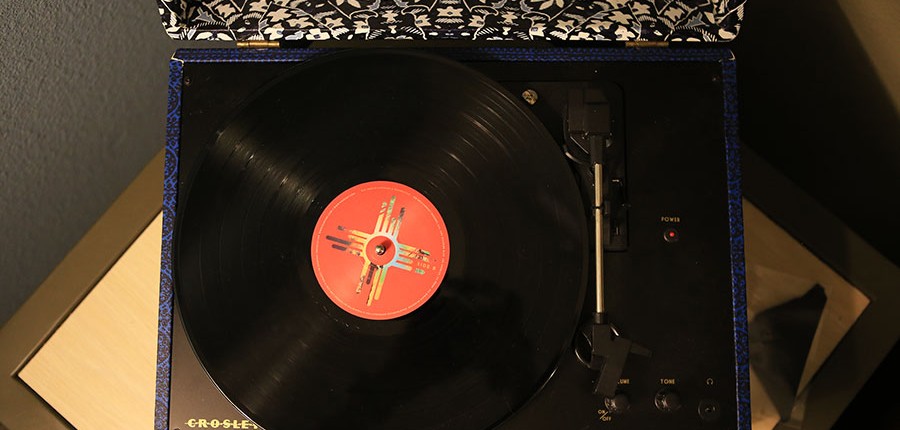Vinyl with a vengeance
Once relegated to the back corner of music stores and dusty storage boxes, vinyl records are making a comeback. Collector’s record shops are popping up from coast to coast. Rolling Stone reported that even in the economic downturn of 2010, vinyl sales started to climb. Most bands even release their EPs on vinyl –– Daft Punk sold 19,000 vinyl copies of Random Access Memories within the first week of the album’s debut in May. Though vinyl is a music format of the past, records hold a certain appeal and a sense of nostalgia.
For this generation of vinyl lovers, CDs and cassette tapes are both mediums within living memory — records hold a novel appeal. It’s difficult to find a dedicated CD store and nearly unthinkable for most musicians to release their latest EP on a cassette tape. Yet, cassette tapes have remained a popular format for experimental bands and industrial musicians. According to record store clerks, cassette tapes have a niche market that has never faded; most cassettes are home-produced, hand-numbered, limited run tapes.
For most music lovers, the click and reel of a cassette tape and the rainbow shine of a CD do not hold the same appeal as the ridges on an LP or 45. Records are delicate, tangible and more than a few decades old. Vinyl is not easily portable and requires a turntable. With these drawbacks, it seems paradoxical that record sales are on the way to overtaking CDs.
Even though, recording techniques have become more precise; shifting from analog to digital recording in the 1970s, record collectors feel vinyl has more depth of sound. Each technological innovation and subsequent media format distances the listener from the performer. Though experts conclude that the average listener cannot differentiate between analog and digital recordings, most consumers agree that vinyl’s pop, hiss and scratch sounds “warmer.”
In an interview with NPR, Scott Metcalfe, Director of Recording Arts and Sciences at the Peabody Institute of Johns Hopkins University, described the nostalgia records evoke –– “We have lost the ritual, and we’ve lost the experience of sitting down and focusing on just a recording.” Spinning a record is not as simple as pressing “play,” the task of setting up a record on the turntable and dropping the needle means that listening to music is a more concentrated task.
Unlike instantly attainable music, there is a thrill to record shopping. Most collectors shop at multiple stores, frequent swap meets and peruse online resale sites. Finding that one album after digging through crates of LPs provides a sense of accomplishment that keeps audiophiles returning to record stores. In addition, most vinyl vendors deal in used records — their inventory is constantly changing — record shopping transforms from a means of acquiring music to a pastime.
What does vinyl have that other music formats lack? Records hold both visual and tactile appeal — from the larger than life album sleeves to the hypnotic way a record turns—records provide more than a purely auditory experience. Vinyl’s surging popularity is more than a brief uptick in sales — it marks a musical lifestyle revival. It’s not about the sound quality but the drop of the needle.

